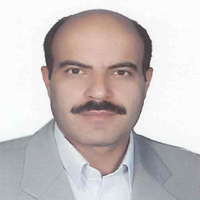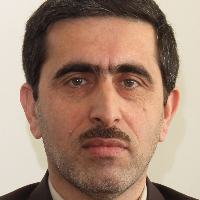Redefining the concept of social problem-solving based on the Stories of Kalileh and Demneh
In today's world, the acceleration of changes and developments at the social level is observed due to the creation of new knowledge and information requiring training in all kinds of life skills (1, 2). For this reason, trying to strengthen all kinds of thinking skills for today's humans can bring significant results in individual and social fields. Meanwhile, problem-solving is the highest form of thinking, one of the cognitive skills that can be used as an effective intellectual tool due to human empowerment in creating new and effective solutions in dealing with various problems and challenges of life (4).
Based on this, the concept of social problem-solving has found a valuable place in recent studies. Social problem-solving is one of the strategies of adaptation to the environment through which people try to find effective and adaptive responses to their situations in life (9). The social problem-solving model of D’Zurilla et al. (2002), revised by D’Zurilla and Nezu (12), is one of the most comprehensive. In this perspective, social problem-solving is a dynamic, multifaceted process. It encompasses two primary, independent elements: one's attitude towards the problem and the skills employed to solve it (known as the problem-solving style). In another model, social and interpersonal problem-solving skills include four components of cognitive skills: defining the problem and its regulation, determining the goal, providing alternative solutions and implementing the solution and checking, and the problem-solving performance of people is based on the result of this process (19). From what comes from the definitions and concepts related to social problem-solving, it is believed that this structure has a culture-dependent nature. Based on the concept of the process of the problem from Foucault's point of view, it is cultural, spatial, temporal, and fluid (13).
Examining these definitions shows that among the theories and definitions of social problem solving, there is no specific definition from the native point of view that can refer to the components of this fundamental skill based on the context of Iranian-Islamic culture. This even thoughconcepts such as collective wisdom, consultation, and problem-solving have always had a valuable place in Iranian culture (15). In the meantime, the field of literature, as a valuable field in Iranian culture, can provide an effective space for researchers to identify and explore the dimensions of psychological and sociological concepts and structures in today's life based on exploration in this field. Unquestionably, stories are one of the most essential tools for moral and social education. Social and moral communication and dialogue take place in the story, and put children and teenagers in a specific intellectual framework. Therefore, this platform has a great capacity to teach ethics, social relations, and a specific lifestyle (16).
Based on numerous types of research in the educational literature, the stories of Kalileh and Demneh book is recognized as works of interest in the field of children and adolescents. Kalileh and Demneh book is famous and prestigious not only in Iran but also in the history of world literature due to its unique story-educational feature (19). Drawing from a variety of research studies, storytelling based on generalizations and using stories in education has effectively improved social skills, critical openness, questioning, and reasoning skills (20, 21). According to what was said about the existing gap in the lack of definition of the dimensions of the social problem-solving structure in the local culture, and according to the effects of social problem-solving on the individual and interpersonal levels, social problem-solving skills need new components and contents to cause personal and social growth and prevention of psychological and social damage. Therefore, the current research was carried out to answer the question, what are the components of the problem-solving solving model in Kalileh and Demneh? Is the designed model valid?
The current research was in the field of basic research in terms of its goal, and in terms of the data collection method, it was qualitative based on Grounded theory. The statistical population included the full text of the one-volume edition of Kalileh and Damneh by Mojtaba Minoui (the book of Kalileh and Damneh has 15 chapters, the stories of which are told in an allegorical form). In line with the research objectives, the story was identified as the primary unit of analysis. Kalileh and Demneh's storieswas reviewed several times, and a general perception was made of them. Then, the resulting codes were divided into semantic units after careful reading several times, and these semantic units were put together according to the concept, and the core codes were categorized. Finally, the combination of axial codes led to the main components and classes of social problem-solving. This model was given to five experts and researchers in the field of cognitive sciences and life skills to check the validity of the social problem-solving model extracted from Kalila and Demneh. All experts considered the presence of each component of social problem-solving as necessary. The codes extracted from the text of the stories were given to one of the experts in the field of life skills and familiar with the book of Kalileh and Demneh to ensure the reliability of the coding. Besides, the degree of consensus about the codes between the researcher and the evaluator was calculated based on the Kappa coefficient (0.95). Statistical analysis was performed in Maxqda 2020 software.
Analyzing the Kalileh and Demneh’s stories to discover the components of social problem-solving showed that thinking and decision-making, interpersonal interaction, behavioral methods in dealing with the problem, attitude to the problem, consultation, and emotions. Assotionally, its management have been identified as the main components in the social-problem solving. The component of thinking and decision-making includes evaluating the situation/person, taking responsibility, thinking from multiple angles, thinking about the consequences, and making quick judgments; the interpersonal interaction component includes effective communication, empathy, and active listening; the component of behavioral methods in dealing with the problem, including the logical method, the impulsive and aggressive method, and the avoidant-passive method; the attitude component to the problem includes two positive attitudes and negative attitudes; the component of consulting includes the dimensions of consulting with wise and knowledgeable people, not consulting with ignorant and deceitful people and asking for help, and the component of emotions and its management includes the dimensions of aggressiveness management, assertiveness, stress, and anxiety management, tolerance of uncertainty and failure, and maintaining peace.
Social problem-solving skill is at the highest cognitive level and is one of the most valuable educational goals. Therefore, social problem-solving can be defined as a multidimensional cognitive and emotional ability in a collective context, done with internal thinking and seeking help to choose the most effective solution based on emotional self-control. Despite the importance of the concept of social problem-solving, one of the limitations of the current research is the needs for similar domestic and foreign research related to the research topic. It is suggested that the multidimensional definition of social problem-solving from the perspective of Kalileh and Demneh's stories can be used by researchers as a basis for designing new measurement tools and also for designing social problem-solving skill training packages.
Ethical Considerations
Compliance with ethical guidelines
The researchers did not use any clinical examination on humans and animals. All ethical principles have been observed.
Authors' contributions
The first author wrote the draft paper. After reviewing and applying some corrections by other authors, the final version was compiled under the responsibility of the second author.
Funding
This research has been done at the authors’ personal expense.
Acknowledgments
This article is part of a PhD dissertation with the ethics code IR.ATU.REC.1401.064 at Allameh Tabataba’i University. The authors appreciate all experts and professors for their advice.
Conflicts of interest
The authors declare that there is no conflict of interest.
-
Comparison of the Effectiveness of Life Skills Training and Mindfulness Skills on Risky Behaviors and Psychopathological Symptoms in Female High School Students of Varamin
Masoomeh Larni, Nemat Sotoudeh Asl*, Faezeh Jahan,
Journal of adolescent and youth psychological studies, Feb 2025 -
The comparison of effectiveness of training based on self-regulated strategy development model and cognitive strategies training based on Englert model on reading disorder of students with learning disorder
Saeede Fatahi *, Reza Ghorban Jahromi, Norali Farokhi, Ismail Sadipour
Journal of Educational Psychology Studies, -
Development and Validation of the Educational Package of the Cognitive Strategy of Emotion Regulation based on the Theory of Mindfulness and its Effectiveness on the Prosocial Behavior of Male High School Students
, Alimohammad Falahati Oushibi *, , Hasan Asadzade, Kamran Sheivandi Cholicheh
Research in Clinical Psychology and Counseling, Autumn and Winter 2025 -
The Mediating Role of Self-Acceptance and Goal Self-Concordance in the Relationship between Basic Psychological Needs and Psychological Well-Being
Atefeh Mazoosaz, Fatemeh Sadat Fatemi, , Zahra Salehi, Zahra Ghalami *
Journal of Applied Psychology, -
The Role of Academic Self-Handicapping Behaviors in School Belongingness Among Students with the Mediating Role of Academic Hardiness and Academic Adjustment
Zahra Ghalami, Nazanin Mohammadi, *, Faeze Nafar
Journal of adolescent and youth psychological studies, Dec 2024 -
The Effectiveness of Mindfulness-Based Parenting Education Program on Quality of Parent-Child Relationships and Parenting Stress of Parents of Children Age Preschool in Tehran City
Minoo Sadat Hosseini Sohi, Fariborz Dortaj *,
Journal of School Psychology,






